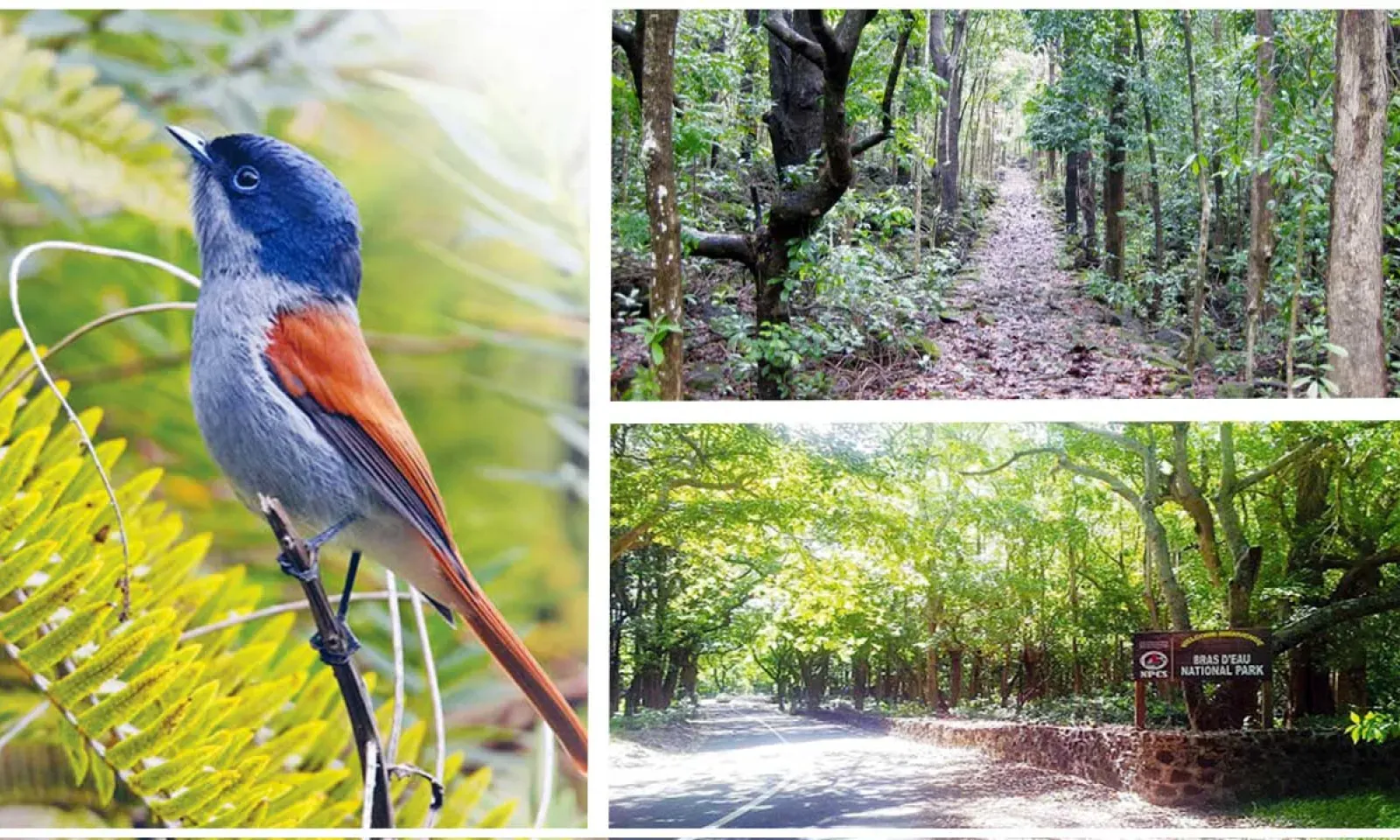Nature lovers and adventurous souls, Bras D’Eau National Park situated in the north-eastern part of the island awaits you. One of the two national parks of Mauritius, Bras D’Eau is known for its rich fauna and flora. With its many picnic spots and hiking opportunities, you will surely have a nice family weekend or romantic walk.
Start off your journey in one of the most original indigenous Mauritian forests from the entrance located near the visitors’ centre. Parking facilities and kiosks for picnickers are available at the centre opposite the trailhead. The three kilometre walking trail, named Coq Du Bois Loop, which winds past an orchard boasting some 2,000 mango trees and 200 litchi trees, is the official trail of the park.
Former property of Dr Clément Ulcoq in 1840, the park was purchased by the British colonial government in 1901. Behind the visitors’ centre, you can admire the ruins of an old sugar mill which closed down in 1867. On the other side of the road, you will notice an imposing stone dating from the French era.
As you will walk along the two hour trail leading to Poste Lafayette, with the chirping of birds for your ears, green lush forest for your eyes and fresh air for your lungs, you will definitely reconnect with Mother Nature. Declared a natural reserve by the government in 1993 and National Park in October 2011, Bras D’Eau is a true sanctuary where patches of the original biodiversity of the island still thrive. The forest is home to many endemic species.
Approximately 497.2 hectares (1,229 acres) in size, you will discover the unique flora comprising of eucalyptus, blackwood, teak and casuarinas trees. Two species of the giant Mauritian ebony trees still survive in small number namely ‘Diospyros melanida’ and ‘Diospyros egrettarum’ as well as the Tecoma. Also several kinds of birds can be spotted in the forest amongst sparrows, Mauritius fodys, canaries, white-tailed tropicbird (quite rare), white-eyes. Bras d’Eau forest is also the habitat of a rare endemic bird, the Mascarene Paradise-flycatcher.
Mare Sarcelle, a lake located outside the trail, covers roughly 89 hectares (220 acres) of the park. Known for being a bird-watching site, Mare Sarcelle is indeed home for some specific migratory birds as well as mangrove swamps. Before starting off the trail, you may visit the centre to learn more about the native and endemic species of Mauritius and especially those you will find in the park, through an exhibition. If you wish to hear about the secrets of the fauna and flora of Bras D’Eau National Park, a meeting with one of the Forest Officers is a must. It is advisable to wear good walking shoes for the trail. To end your visit, you can either opt for a picnic on the wooden tables near the parking area or a lunch break at Post Lafayette beach, at a few minutes from the park’s exit.
